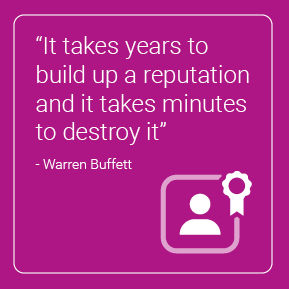Any business that counts other businesses as a key audience should have a solid B2B marketing strategy in place, targeting employees who have influence over purchasing decisions.
What’s the difference between B2B and B2C marketing?
There is a core difference between business-to-business (B2B) and business-to-consumer (B2C) marketing and it comes down to how purchasing decisions are made.
Imagine you’re booking a trip away for you and your partner. You have a budget in mind, but it’s very easy to start adding on the in-flight champagne, the excursion to a private beach and the upgrade to the car rental. After all, it’s your holiday, you want to make it romantic and memorable.
Now imagine booking a business trip. Your hotel is probably selected based on cost and proximity to the train station. Your tickets are pre-booked for the best deals and you’re eating a meal-for-one at the nearest café for lunch.
The difference, of course, is that consumer purchasing decisions are often driven by feelings, while business purchasing decisions are based on ROI.
A B2C marketing campaign has the luxury of being able to appeal to any potential customer, even if that person isn’t the buyer. For example, someone sees a new watch that they like and may send the link to their partner, who buys it as a birthday gift.
In B2B, this purchasing power sits within a much smaller group of people. Fifty people in an office might think that the printer is in need of an upgrade, but it’s only the office manager or a more senior employee who has the ability to make a decision on buying a new one. Advancing from that interest into B2B lead generation is a further challenge.

Simple steps to create a B2B marketing strategy
The following steps will help you to build your B2B marketing strategy:
- Choose business objectives to measure your activity against. These should tally with your overall company goals. Set targets for the levels you want to be achieving and a timeframe in which you want to see results.
- Define your audience. Research demographics and narrow them down so that you really begin to get a clear picture of your target audience – their purchasing habits, the channels they regularly use, how and where they look for information.
- Find out what their problems are and solve them. If you can find a clear solution to an issue you know your audience is struggling with, and you can present it clearly and concisely, you’re making it much easier for your potential customer to make a decision.
- Work out which channels your audience regularly use and engage with them. From industry blogs and social media, to search and email, you need to create a consistent presence in the areas your audience inhabit.
- Produce creative, interesting campaigns that stand out from the crowd. Just because purchasing decisions tend to be more focused on the bottom line and because you’re selling printers or photocopying or paperclips, doesn’t mean you have to be boring. Your B2B customers are still humans and they want to be engaged and interested by what you have to say.
 American business magnate Warren Buffett once famously quoted: “It takes years to build up a reputation and it takes minutes to destroy it.” With GDPR and other regulations now top of the agenda, you need to ensure that your B2B marketing is compliant to protect yourself and your business from regulatory fines and the associated negative brand reputation.
American business magnate Warren Buffett once famously quoted: “It takes years to build up a reputation and it takes minutes to destroy it.” With GDPR and other regulations now top of the agenda, you need to ensure that your B2B marketing is compliant to protect yourself and your business from regulatory fines and the associated negative brand reputation.- Keep up the momentum. B2B audiences typically take longer to make a purchasing decision, because they need to go through an approvals process. Where a B2C customer will usually make a decision and order quickly; B2B customers will take their time, consider reviews, look at multiple sources of information and discuss with colleagues before making a selection.
- Use analytics to measure and improve your campaigns time after time. Focus on the channels, activity and content that seem to resonate best with your audience and do more of the same. Don’t be afraid to adjust as time goes on to get the best out of your marketing spend.
Experian BusinessView provides a definitive and consistent view of the UK business population, with accurate cross-channel data and in-depth insight. Find out more here.
